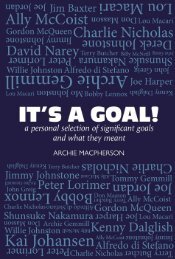A Glasgow Mosaic by Ian R Mitchell sampler
With this book is completed a trilogy of works begun in 2005 with This City Now: Glasgow and its Working Class Past, and continuing with Clydeside; Red Orange and Green in 2009. The three books have all had similar aims in trying to raise the profile of forgotten or neglected areas and aspects of Glasgow and its history, in a small way trying to boost the esteem in which such places are held by the people who live in there and by those who visit. Moving away slightly from the working class focus, this third instalment presents a broad view of Glasgow’s industrial, social and intellectual history. From public art to socialist memorials, and from factories to cultural hubs, Ian Mitchell takes the reader on a guided tour of Glasgow, outlining walking routes which encompass the city’s forgotten icons.
With this book is completed a trilogy of works begun in 2005 with This City Now: Glasgow and its Working Class Past, and continuing with Clydeside; Red Orange and Green in 2009. The three books have all had similar aims in trying to raise the profile of forgotten or neglected areas and aspects of Glasgow and its history, in a small way trying to boost the esteem in which such places are held by the people who live in there and by those who visit. Moving away slightly from the working class focus, this third instalment presents a broad view of Glasgow’s industrial, social and intellectual history. From public art to socialist memorials, and from factories to cultural hubs, Ian Mitchell takes the reader on a guided tour of Glasgow, outlining walking routes which encompass the city’s forgotten icons.
- No tags were found...
Create successful ePaper yourself
Turn your PDF publications into a flip-book with our unique Google optimized e-Paper software.
pre-amble<br />
activity brings to the engaged and informed observer. And you can<br />
experience this learning, and this pleasure in any large city, not just<br />
London – or Paris.<br />
Over the past decade or more there has been an explosion of<br />
writing and theorising about this phenomenon of urban walking<br />
which has emerged as the subject of a new academic discipline,<br />
taking on the name psychogeography – a phrase coined <strong>by</strong> the French<br />
writer Guy Debord half a century ago. There are writing careers and<br />
academic posts in psychogeography now. But in this process urban<br />
walking appears to me to have lost a little of its edge, and to have<br />
headed towards a certain narcissism. Many studies from this school<br />
of thought appear to indicate that their authors spent their time not<br />
actually on the streets, but in libraries and archives reading other psychogeographers<br />
past and present, and addressing their written productions<br />
not towards a wider audience, but towards these, their peers.<br />
The books produced are often more about what is going on inside the<br />
head of the observer than outside of it in the social streetscape.<br />
In trying to avoid this pitfall, I am pleased that through the<br />
writing of these books I have come involved in giving talks to, and<br />
leading walks for, both local people and visitors, in many of the areas<br />
concerned. I have also been involved in a modest way in helping<br />
with various social, community and heritage projects in Maryhill,<br />
Govan and elsewhere in the city. More than with any other works I<br />
have written, these books of urban wanderings have made a modest<br />
connection with their audience in a practical and interactive way,<br />
which is deeply gratifying.<br />
A century ago, <strong>Glasgow</strong> was one of the ten largest cities in<br />
Europe, the only non-capital city (apart from Naples) which had over<br />
1,000,000 people. In keeping with this, it has built a legacy which<br />
the authoritative The Buildings of Scotland: <strong>Glasgow</strong> <strong>by</strong> Elizabeth<br />
Williamson, Anne Riches and Malcolm Higgs (2005), describes as<br />
follows:<br />
A visitor with time to spare will find that the city centre is rich<br />
with remarkable buildings from the height of its industrial prosperity<br />
and that the grandest suburbs are planned on a scale comparable<br />
with many European capitals.<br />
11


















